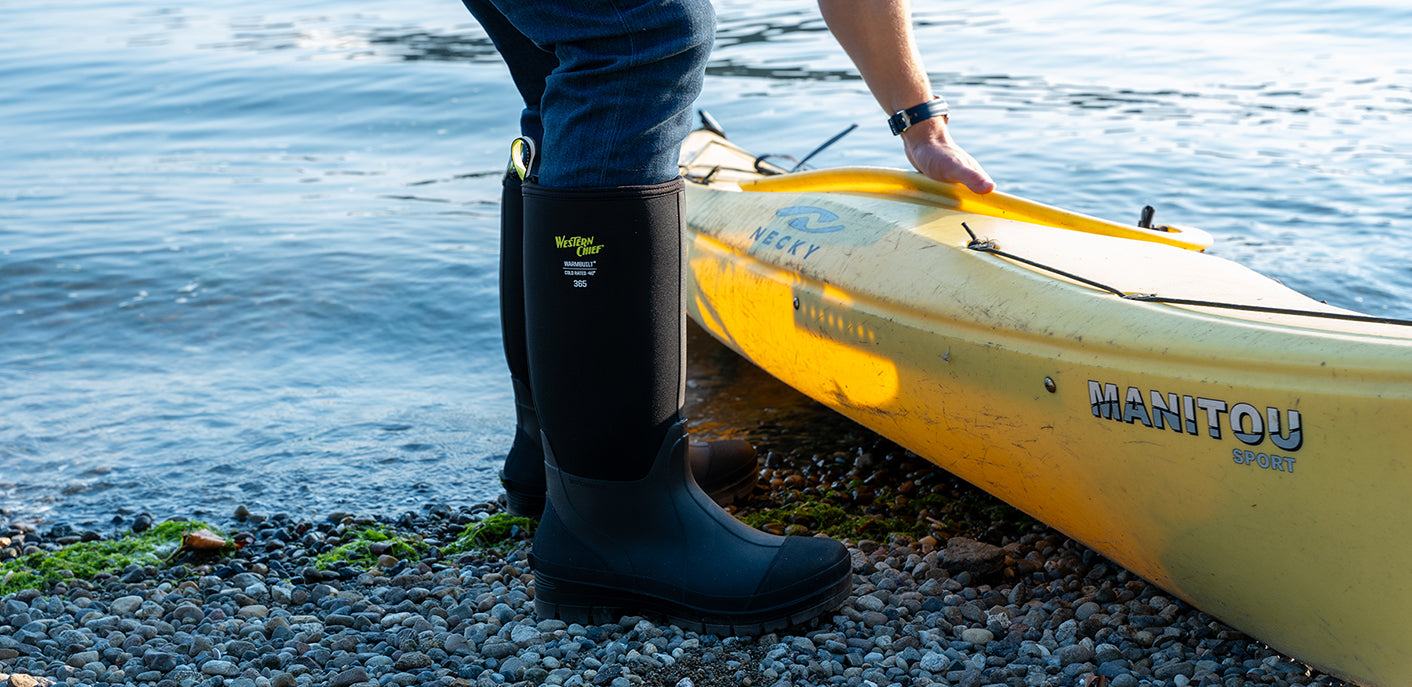March Into Spring with Confidence with These Waterproof Rain Boot Materials
Choosing the Right Waterproof Rain Boot Materials
When you’re looking for the right rain boots for your kids, you will likely come across a number of differences. It can be a challenge balancing the different factors that go into the materials used in kids rain boots. Should you buy a boot made from PVC or rubber? Both are waterproof, but how else do they differ? What about lining to keep your little one’s feet warm and dry? Understanding the distinction between materials can make a difference in comfort, durability, and feel. Let’s take a look at the most common rain boot materials to help you find the right pair for you or your little one.
Boot Material: PVC

PVC is a durable type of plastic made from vinyl. It’s also lighter and more affordable than rubber. It’s stiffer and less durable than rubber but still makes an excellent rain boot. PVC works especially well in rain boots that light up to accommodate the extra materials needed for the fun lighting effect. It’s worth noting that PVC is a synthetic material.
Boot Material: Rubber

Rubber a natural material that’s heavier and more durable than PVC but is consequently more expensive. It’s more flexible and comfortable than PVC, as well. A vulcanization process can improve the durability of the rain boots even more, reducing potential weak spots that might tear or damage over time. Both rubber and PVC will make high-quality kids rain boots—it’s up to you to decide which aspects you value more: durability, affordability, flexibility, or weight.
Liner Material: Cotton
A cotton lining will keep your feet warm, but does not dry as fast as a blend, and may not be quite as comfortable. It is, however, very soft and breathable. Cotton is thicker and heavier than a blend. As a consequence, it’s also more expensive. The material also can regulate temperature more effectively than a cotton/polyester blend.
Liner Material: Cotton/Polyester Blend
A cotton/polyester blend is more cost-effective than 100% cotton and tends to be more comfortable than cotton on its own as the blend is less abrasive. It’s also more durable, as it’s partly made from durable synthetic material. Unlike full polyester, a blend is more breathable, much like cotton with enhanced durability. Because the blend has moisture-wicking properties, it’s better at keeping little feet dry. However, it’s not as warm as cotton.
Making Your Selection
Any of these options above will make fine kids rain boots. Each material has its advantages and disadvantages when compared to the others and it comes down to what you value most. Both PVC and rubber are used to make rain boots that will stand up to adventures outside, splashing in puddles, running through mud, or helping parents out in the garden. Both cotton and a cotton/polyester blend will keep feet dry and warm, but each does one better than the other. When deciding, you simply need to choose which your child deems more important. With all of the materials above, there is no wrong choice, just a choice that fits you or your child better.
With more than a century of experience, Western Chief knows how to create boots for the whole family. The company was founded during the Alaska Gold Rush in 1891, aiming to fulfill the prospectors’ needs for durable, sturdy boots to face the harsh weather in Alaska. In modern times, Western Chief has expanded to making boots for the whole family, including rain boots kids love with classic characters and exciting designs. The brand is known for its reliable working boots, wide calf rain boots, and more. From gardening to jumping in puddles, tromping through a muddy barnyard, or working around the farm, Western Chief has the affordable, high-quality footwear for all of your needs.
Shop for kids rain boots made from PVC or rubber at www.westernchief.com




